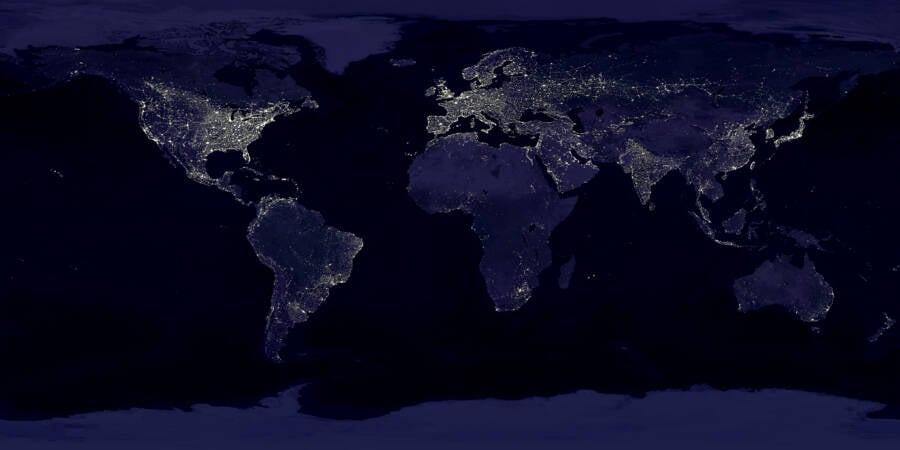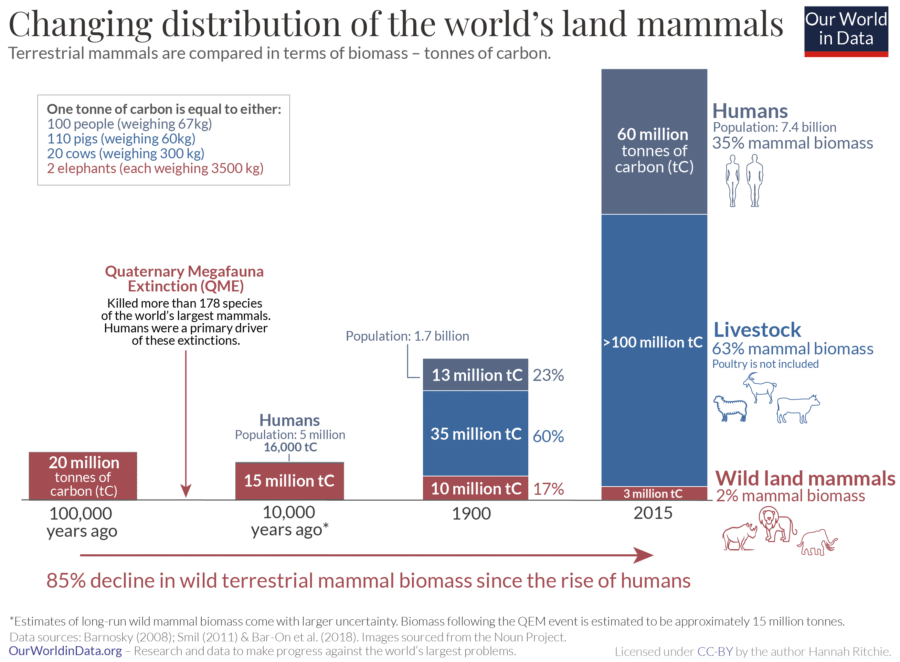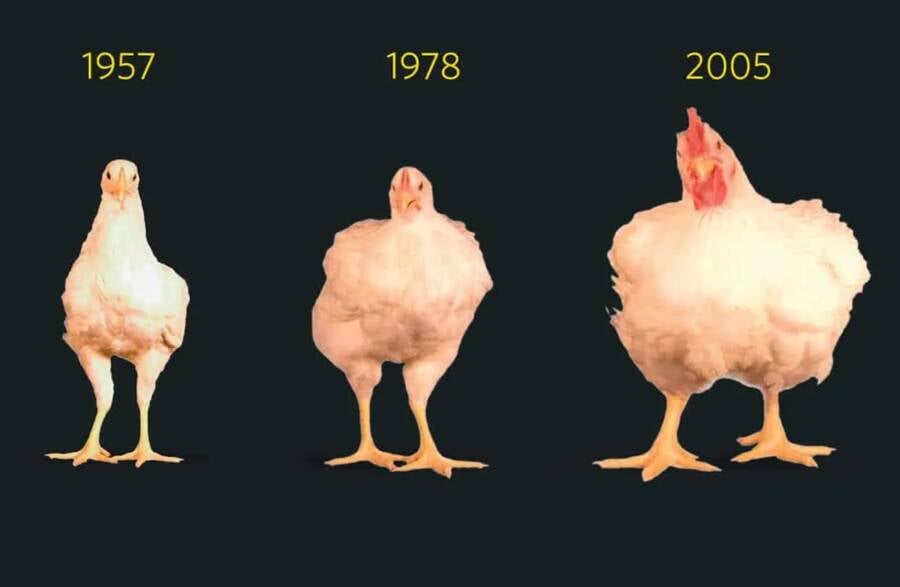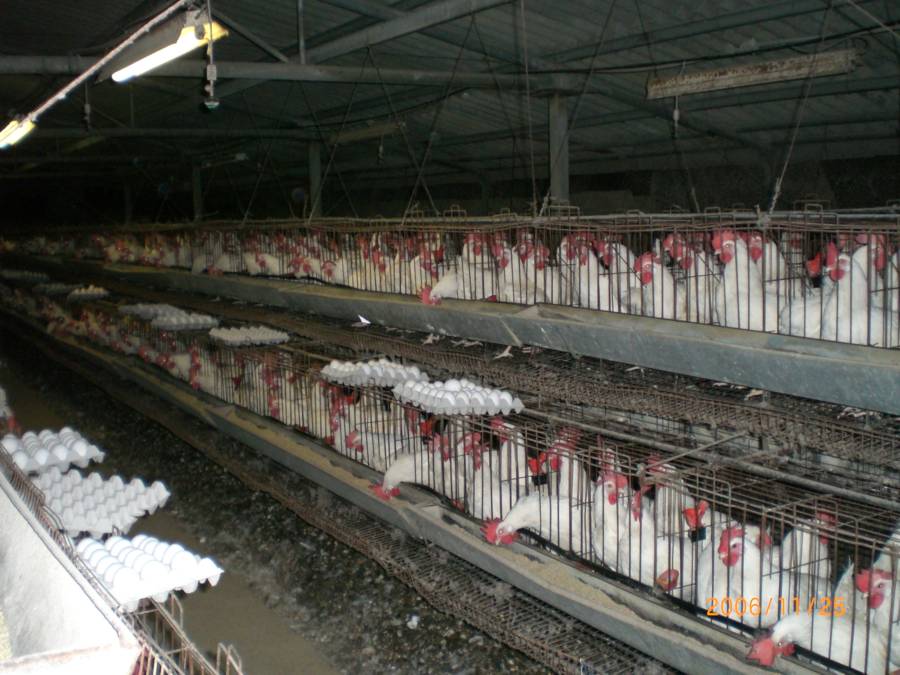In 2018, a team of researchers argued that the sheer amount of chicken bones on the planet — which belonged to birds specifically bred for human consumption — meant that they may be the most notable fossils of our age.

Corey Watson/UnsplashCould your next plate of chicken wings be an incredible archaeological discovery in the future?
In Ernest Becker’s 1973 philosophical work The Denial of Death, the Pulitzer Prize-winning writer asserts that we as humans strive to leave some sort of significant legacy behind us. We want to ensure that our symbolic or spiritual selves live on long beyond our deaths.
Ancient civilizations have certainly done so, sometimes unintentionally. Famous millennia-old wonders such as the Pyramids of Giza and Stonehenge are living reminders of the past, and religious practices like mummification have preserved some of our ancestors in time.
But what about when modern humanity is wiped out someday? We might like to imagine that future archaeologists or aliens who visit Earth will uncover our magnificent monuments, our massive cities, or perhaps even our personal diaries. However, a team of researchers argued in a 2018 study, published in Royal Society Open Science, that the best-preserved evidence of modern mankind will be all the chicken bones we left behind.
That may seem bleak, but it’s not entirely baseless. Humanity has had a profound impact on the planet over the millennia. One way that humans have impacted the Earth since prehistory is through our ever-changing diets. And as the human population eventually grew well into the billions, the scale of production for our diets likewise had to grow.
Chicken may not be the most widely consumed meat in the world — that would be pork — but experts think chicken will likely surpass pork in the near future. And since we’re largely leaving the chicken bones untouched, a whole lot of them have been littered across the planet in landfills. One day, they might be the single greatest marker of mankind, especially considering how quickly humans have modified those chicken bones.
The “Anthropocene” And The Effects Of Humankind On Earth

Wikimedia CommonsLights from Earth’s cities at night.
According to Smithsonian Magazine, some experts have asserted that human civilization is currently in an era called the “Anthropocene,” a term that describes the unprecedented influence humans have on the planet.
The term itself is still technically just a proposal, and it’s not necessarily widely adopted as a geological epoch. It was popularized, however, by the atmospheric chemist Paul Crutzen around the year 2000. In simple terms, the word suggests that humanity has fundamentally altered the planet’s geological and ecological process to such an extent that it is worthy of being a distinct, new chapter in Earth’s history as a whole.

Wikimedia CommonsA chart showing the changing distribution of the world’s land mammals over time.
Key characteristics that define the Anthropocene include changes to the atmosphere, mass extinctions of species, altered landscapes through urbanization and agriculture, ocean acidification, and the creation of materials like plastic and concrete that will persist in the geological record.
Even among those who use the term Anthropocene, though, there is some debate about when it began, with some suggesting the start as the agricultural revolution that began thousands of years ago, and others pointing to the Industrial Revolution in the 18th century, or more recently, the post-World War II era. Regardless, it’s hard to deny humanity’s impact on the planet, even just considering the past 80 years or so.
Because of this influence, once the modern human civilization eventually vanishes, there will still be some significant effects on Earth that mark our existence in history. If a 2018 study is correct, then the greatest legacy that humans leave behind will be chicken bones.
People Are Eating More Chicken Each Year

University of AlbertaChickens now grow much faster and bigger than they did years ago due to human intervention. This rapid modification has also had a significant effect on their skeletal structure and the nature of their bones.
The study, published in Royal Society Open Science, posited that the remains of domesticated chickens will be a major marker of our civilization and our changing biosphere, partly because there are so many of them.
As of 2020, the global chicken population reached more than 33 billion, making them the most abundant domesticated animal in the whole world. That also means that chickens far outnumber humans, as the world’s population of people is believed to stand at just over 8.2 billion.
In 2022, it was estimated that more than 70 billion chickens would be slaughtered globally each year, mainly to accommodate our insatiability for the bird, and that rate of chicken consumption is only expected to increase. If this pattern of consumption continues, that means chicken will eventually beat out pork as the world’s most consumed meat.
As Vox reported in 2021, the American diet is particularly reliant on chicken, with Americans consuming about twice as much chicken as they did back in the 1970s. A large reason for that is the widespread industrialization of poultry production and how much easier that has proven to be compared to beef or pork, especially considering how quickly chickens reach maturity and how they can be raised in smaller spaces than larger livestock.

Wikimedia CommonsChickens in an industrial coop in 2006.
Chickens grown in these factory-like facilities are specially bred to grow faster and bigger than they did decades ago, but that also causes them to be incapable of living life normally. They often spend their short lives in incredibly cramped conditions, with bodies too big for their joints, to be slaughtered and fed to millions upon millions of people. Consider, too, that a single pig or steer has substantially more meat and could feed more people — and would also leave behind fewer bones in the process.
The key role of chicken in our diet isn’t just because it tastes good. After all, many people would say that beef and pork products taste good, too. An increasing awareness about the health concerns regarding red meat and cholesterol has also played a role in the surge of chicken-centric meals.
Of course, cost plays a role, too.
All of these factors can explain why there are so many chicken bones on Earth, but they don’t necessarily explain why that would be humanity’s legacy. After all, unless they’re somehow preserved, bones don’t typically stick around forever. It takes longer than soft tissue, but bones do decay — except, some researchers argue, modern chicken bones might not degrade.
Why Experts Believe That Humanity’s Ultimate Legacy May Be Chicken Bones
Chickens that are raised for their meat today have evolved a specific (and bizarre) skeletal structure unique to the modern human era. Due to the way they were bred and fed to grow faster and bigger, specifically for human consumption, they’ve been left with unnaturally giant, porous bones.
Researchers compared the unique bones of these modern birds to their ancestors and concluded that the chicken bones of today will become fossilized as a representation of when humans dominated Earth. But why?

Levi T./UnsplashModern chicken bones tend to preserve well in landfills.
While most wild bird bones are prone to decay, the bones from domesticated chickens are often discarded in landfills, where organic materials are typically preserved well. The researchers say that many of these bones will likely be mummified, which is why lead study author Carys E. Bennett asserts that chickens are “a potential future fossil of this age.”
Bennett also said of the future paleontologists who might discover our discarded chicken bones: “I think it would just astonish people. How did this animal evolve when it really can’t support its own body weight and grow to an adult size? And why’s it got such a strange, porous bone?”
Eventually, it’ll likely become clear that humans modified these chickens to feed and satisfy as many people as possible, and the birds’ remains might be named one of the biggest markers of the Earth’s changing biosphere.
So while humankind has certainly developed a multitude of significant advancements over the course of hundreds of thousands of years, when all is said and done, it looks as though the main legacy that humans will leave behind might be evidence of our chicken addiction.
Next, check out these long-lost civilizations. Then, read about a recent theory that might solve the mystery of why the Maya civilization disappeared.





